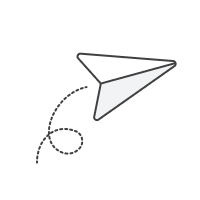If you know how to calculate boat power requirements, you won’t be caught short if your batteries can’t keep up. It’s especially important in the summer heat. Many cooling devices require power (wind scoops and swimming are the exceptions). Getting any new equipment requires an analysis of whether you have enough power and whether this is what you want to use it on.
Comfortable Cruising Means Having Enough Power
Since we began cruising in 2002, Dave and I felt that sufficient power aboard is crucial to making living aboard and cruising a sustainable lifestyle.
On one hand, we seek out low power draw options for our needs. One inspiration for starting The Boat Galley in 2010 was to talk about the power draw for various galley appliances. And I wanted to pass on techniques for cooking with few to no electrical appliances. Still, it can be difficult to find the power used by various devices.
Converting Energy Draw to Amp Hours
Many electrical tell how much power they use in watts or tell the amps for being plugged in to a standard house (110v) power supply. On boats, we generally look at power draw in terms of 12v amp-hours.
If an item natively uses 12V power, and tells the amps, it’s simple. Take the amps stated and figure how many hours a day you’ll use the item. Let’s take my Caframo fan that draws 1 amp and assume that I have one running 24 hours a day – that’s 24 amp-hours.
If the items draw is marked in watts, you begin by dividing watts by 12 to get the 12V amps. Then again, figure the number of hours you’ll use the item and multiply. The mattress cooler I bought used 8 watts, so .66 12V amps. If you use it 8 hours a night, and the total power used is 5.28 amp-hours.
If the item runs on 110V (normal shore current in the US), you multiply the amps by 10 to get the 12V draw. Then combine with average usage to determine the amp-hours. Since there’s a bit of inefficiency when using an inverter, I always round the result up.
So now you know how much a new gizmo that you’re thinking of getting will cost in terms of power.
Comparing Draw to Available Power
Next, check out power available. Start with how much battery capacity you have in amp-hours. How much of that is usable (generally 50% for lead-acid batteries and 80% for lithium)? Then see how much of that you’re using and how quickly you’re recharging it from wind, solar, generator and alternator. A battery monitor is essential for knowing exactly what is going on. Do you still have power available? Is it sufficient for your gizmo?
If a particular item requires too much power for your system, you must make a decision. You can decide to do without. Look for alternatives that may draw less. Or increase your battery capacity or your power generation capability. In general, look first at battery capacity if you are fully charged early in the day, and power generation if you are rarely reach a full charge.
Our Power Choices
Everyone has a different idea of what an acceptable lifestyle is. For us, it was lights, a refrigerator and freezer, a rechargeable vacuum, plenty of power for computers and other electronics. In addition, we had fans and other devices to stay cool without air conditioning. We also had a watermaker, but it ran off our generator not the batteries.
Our 300 amp-hours of lithium batteries, which charged much more efficiently than lead-acid and also can be discharged further, which helped if we had a cloudy day or two. We had 495 watts of SunPower A+ solar panels. Additionally, we had a Honda 2200 generator, which was needed for power in December and January when the days are short and the sun is lower to the horizon. In the winter, the solar panels don’t produce as much; we rarely use it other than for the watermaker the other 10 months of the year. And finally, there’s an alternator on the engine which helps out when we’re motoring.
Getting a new device – particularly one that will require more than a minimal amount of power – isn’t a snap decision. Just realize that you have a certain number of amp-hours to spend, and then decide how you want to spend them. And if you don’t have enough for something you really want, figure out how to get more.
Related Posts
Flatten the learning curve with practical how-to info that gives you the confidence to step into life aboard.
Start Learning Today

Carolyn Shearlock has lived aboard full-time for 17 years, splitting her time between a Tayana 37 monohull and a Gemini 105 catamaran. She’s cruised over 14,000 miles, from Pacific Mexico and Central America to Florida and the Bahamas, gaining firsthand experience with the joys and challenges of life on the water.
Through The Boat Galley, Carolyn has helped thousands of people explore, prepare for, and enjoy life afloat. She shares her expertise as an instructor at Cruisers University, in leading boating publications, and through her bestselling book, The Boat Galley Cookbook. She is passionate about helping others embark on their liveaboard journey—making life on the water simpler, safer, and more enjoyable.











Leave a Reply